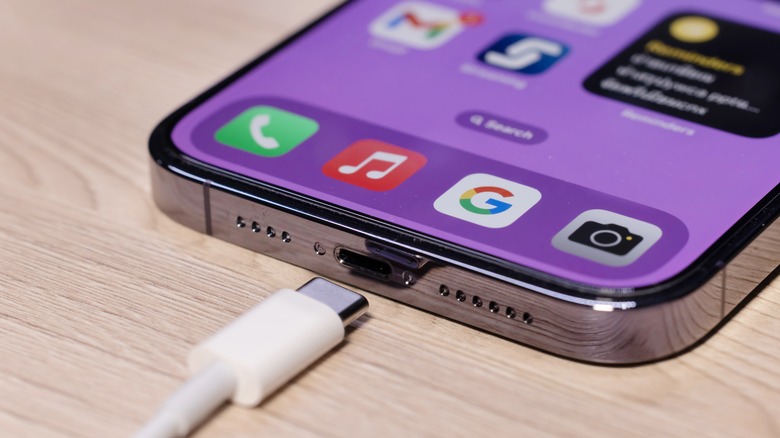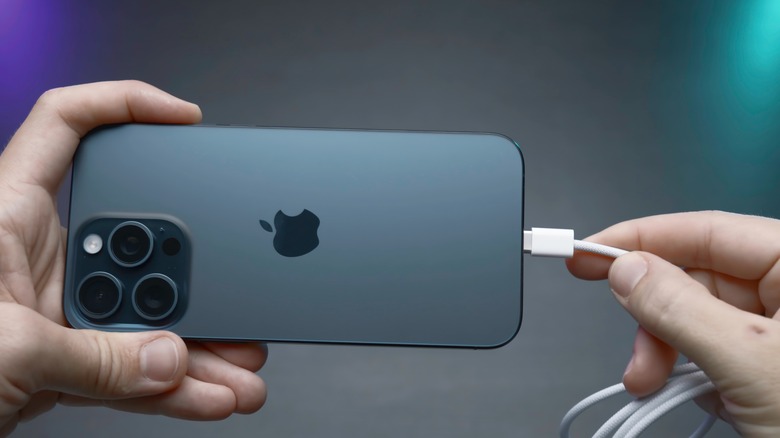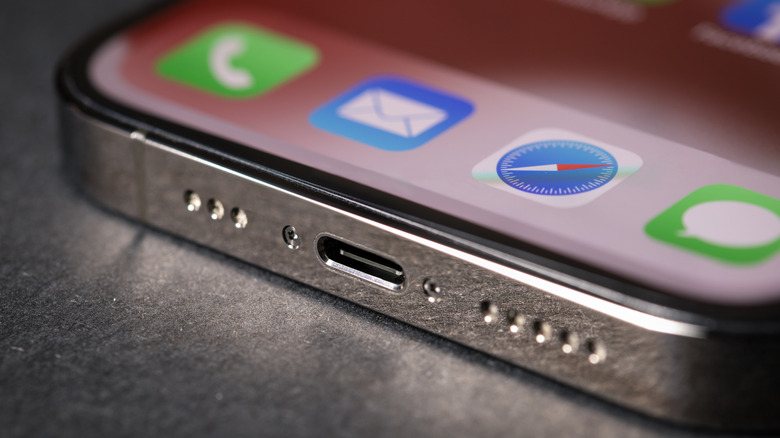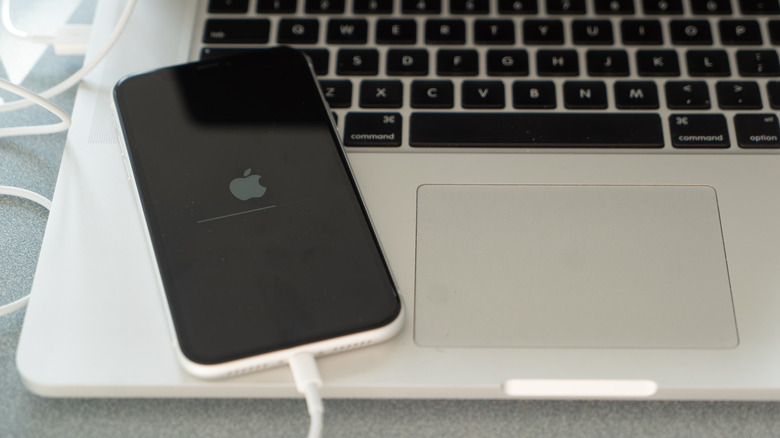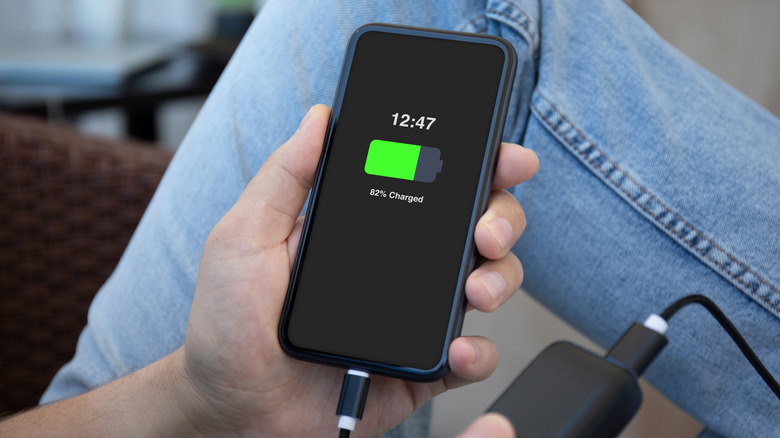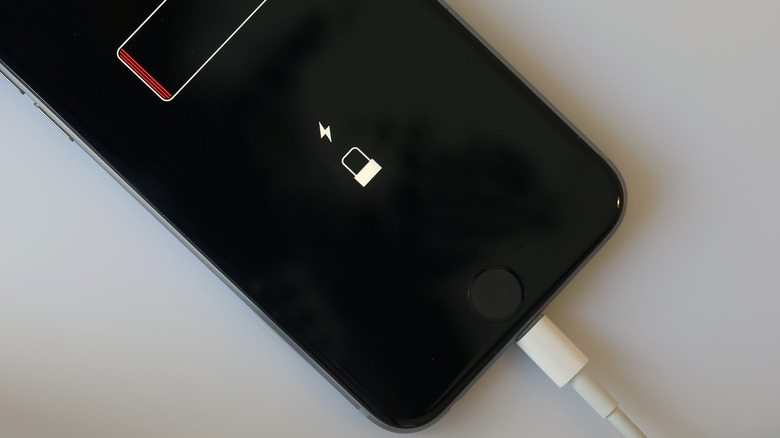5 Reasons Why Your iPhone May Not Be Charging When Plugged In
There are few feelings as frustrating as picking up your iPhone after letting it sit to charge overnight, only to discover that its battery level has not changed at all — or may have even gone down. Now you're scrambling to get it powered up as quickly as possible while getting ready for work, but the only thing that's rising is your blood pressure as nothing seems to be working for your device, which you'll need soon for GPS navigation or to request an Uber.
This is a scary situation faced by countless iPhone owners every day, and you may even be one of the poor unfortunate souls currently going through this ordeal. Of course, no one anticipates the day their iPhone stops charging, but the harsh reality is that the wear and tear our devices are prone to can affect their ability to power up. Perhaps more frustrating is that there isn't a singular straightforward answer as to why your phone has suddenly stopped charging. Nevertheless, knowing some of the most common reasons for this problem will help you better understand your specific issue and find a solution quickly. With that said, here are five reasons why your iPhone may not be charging.
Worn-out charging cable or adapter
While there's always the chance that your iPhone could be experiencing more advanced technical errors, it's more than likely that the charging accessories themselves are simply worn out. Typically, Apple lightning chargers will last about a year or roughly 12,000 charging cycles before their performance starts to deteriorate. This may not be a huge concern right away, but the longer it is ignored, the closer you'll get to things going bad on you when you least expect it.
If your phone isn't charging correctly, inspect your charging cable for any signs of damage such as torn-up exposed wires or cable sheaths, flattened areas, or a wonky connector. It's important to get a damaged charger replaced right away — not only to ensure your device is charged properly but also because faulty items such as these can become a potential electric and fire hazard. This is also why it's crucial to invest in official charging cables and adapters from Apple as opposed to an off-brand model. Sure, you may save a few bucks, but you won't be able to guarantee the same life expectancy and safety standards put in place by the company.
Dirty charging port
Our iPhones were made to go everywhere with us. Nowadays, practically every pocket, purse, or backpack has a tiny rectangular passenger inside. However, you may unintentionally be complicating your iPhone's ability to charge while doing so.
The port at the bottom of your device is prone to getting clogged up with lint, dirt, and debris of all kinds that will obstruct its ability to connect to the charging cable and receive power. Properly cleaning out your phone's charging port isn't difficult, but there are some important notes to keep in mind. Don't use metallic objects such as paper clips to dig inside for debris, as these can harm the delicate mechanics inside the port while also posing an electrical hazard. Similarly, blowing inside with your mouth or using objects doused in alcohol can launch damaging bits of moisture inside your device.
To get the job done right, your best bet is to power down your phone and use a toothpick to lightly go inside and fish out whatever is clogging up the port. While Apple doesn't recommend using compressed air for this task, users have largely found that a few small bursts help provide more intensive cleaning and won't harm your device. If doing this doesn't change anything, there may be more extreme internal damage that will require it to be serviced.
Overexposure to the elements
To an iPhone, our world is full of endless dangers and hazards. Among the most harmful — and easy to miss — elements that can harm your iPhone's ability to charge is the temperature of its environment. Your device should stay between 32 and 95 degrees at all times for optimal performance.
Keeping your iPhone by a sunny window or in your car on a long drive can easily get it overheated. Using graphics-heavy apps such as games or camera apps may also cause your phone to get too hot. When this happens, the phone will halt or slow down many of its functions, including charging, until it returns to its normal temperature, while prolonged exposure can lead to even more internal damage to your iPhone. Similarly, your phone may also stop charging if it gets too cold. In these instances, unplug your iPhone and let it reset itself in an ambient location before plugging it up again.
Of course, you should also do your best to keep both your iPhone and its charging accessories as far away from watery environments as possible. Moisture can enter your phone's charging port if you're not careful, and it won't receive power from the charger as a safeguard against additional electric issues.
Using your phone while it's charging
Some people believe that using your phone as it charges will damage the battery. However, with no official scientific claims to back these claims, experts widely consider this a myth. Nevertheless, it's still a good idea to give your device its space while charging.
You may notice that your iPhone's charging speed is significantly slowed down while in use during a power-up. When your phone is using power from its battery while simultaneously receiving it, it will need to strain to consume more energy for charging. As a result of this dual action, your iPhone's charging speed will get slower. This is especially the case if using high-functioning apps that generate excess heat. As mentioned earlier, overheating can negatively affect your phone's ability to absorb power even when it's not in use. So when overstimulated by these many actions, it's no surprise that the battery bar stays relatively steady.
So unless you really need it, leave your iPhone alone to charge — it will fill up far quicker than you think. Likewise, it's a good idea to clear your app history while charging, as this will also lighten the load on your device's power usage.
iPhone's optimized charging feature
In recent years, Apple has taken a more proactive role in protecting your device's battery health and longevity. With the release of iOS 13 in 2019 came the introduction of Optimized Battery Charging, a feature meant to track your charging habits to more strategically deliver power to your device. This more precise method means that your iPhone's charging time has taken a hit.
If you possess a more recent iPhone, you may have noticed moments when it stops charging once it hits 80%, with a message on the lock screen stating when it will continue powering up. While this may seem confusing at first, it's all part of how optimized charging reads your iPhone. Essentially, your device takes note of the times of day that you typically charge it and adapts to those hours to ensure it doesn't stay fully charged for too long.
Constantly keeping your iPhone overcharged, such as when you're asleep at night, can eventually wear out the battery and shorten its lifespan. If you live by a relatively predictable schedule, this function is a convenient way to care for your device and its battery. The trade-off is that it will slow down and eventually temporarily halt your device from charging, which can be irritating during an emergency situation when you need your phone fully charged. This and similar default features such as Clean Energy Charging — another new iPhone battery setting – can be turned off by going into your battery health settings and altering it to fit your preferences.
